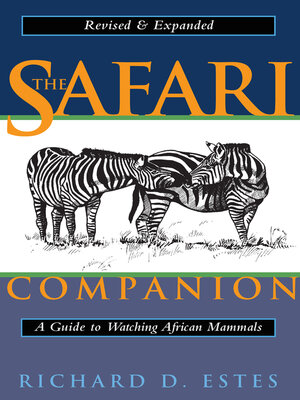The Safari Companion
ebook ∣ A Guide to Watching African Mammals Including Hoofed Mammals, Carnivores, and Primates
By Richard D. Estes

Sign up to save your library
With an OverDrive account, you can save your favorite libraries for at-a-glance information about availability. Find out more about OverDrive accounts.
Find this title in Libby, the library reading app by OverDrive.



Search for a digital library with this title
Title found at these libraries:
| Library Name | Distance |
|---|---|
| Loading... |
The best field guide to observing and understanding the behavior of African mammals and an indispensable tool for naturalists traveling to Africa!
The Second Edition has been fully revised and includes a new preface.
The Safari Companion enables readers to recognize and interpret visible behavioral activities, such as courtship rituals, territorial marking, aggression, and care of young. Each account of over 80 species includes a behavioral table in which the unique actions of the hoofed mammals, carnivores, and primates are described for easy reference.
Other features include:
Expert Illustrations Useful maps showing major national boundaries, vegetation zones, and game parks An extensive glossary Tips on wildlife photography A list of organizations working to protect African wildlife
“The best behavioral field guide ever.”—Sy Montgomery, author of Tamed and Untamed
“The book is more than a field guide; it is a valuable tool for conservation.”—Kathryn S. Fuller, President, World Wildlife Fund (U.S.A.)
The Second Edition has been fully revised and includes a new preface.
The Safari Companion enables readers to recognize and interpret visible behavioral activities, such as courtship rituals, territorial marking, aggression, and care of young. Each account of over 80 species includes a behavioral table in which the unique actions of the hoofed mammals, carnivores, and primates are described for easy reference.
Other features include:
“The best behavioral field guide ever.”—Sy Montgomery, author of Tamed and Untamed
“The book is more than a field guide; it is a valuable tool for conservation.”—Kathryn S. Fuller, President, World Wildlife Fund (U.S.A.)







